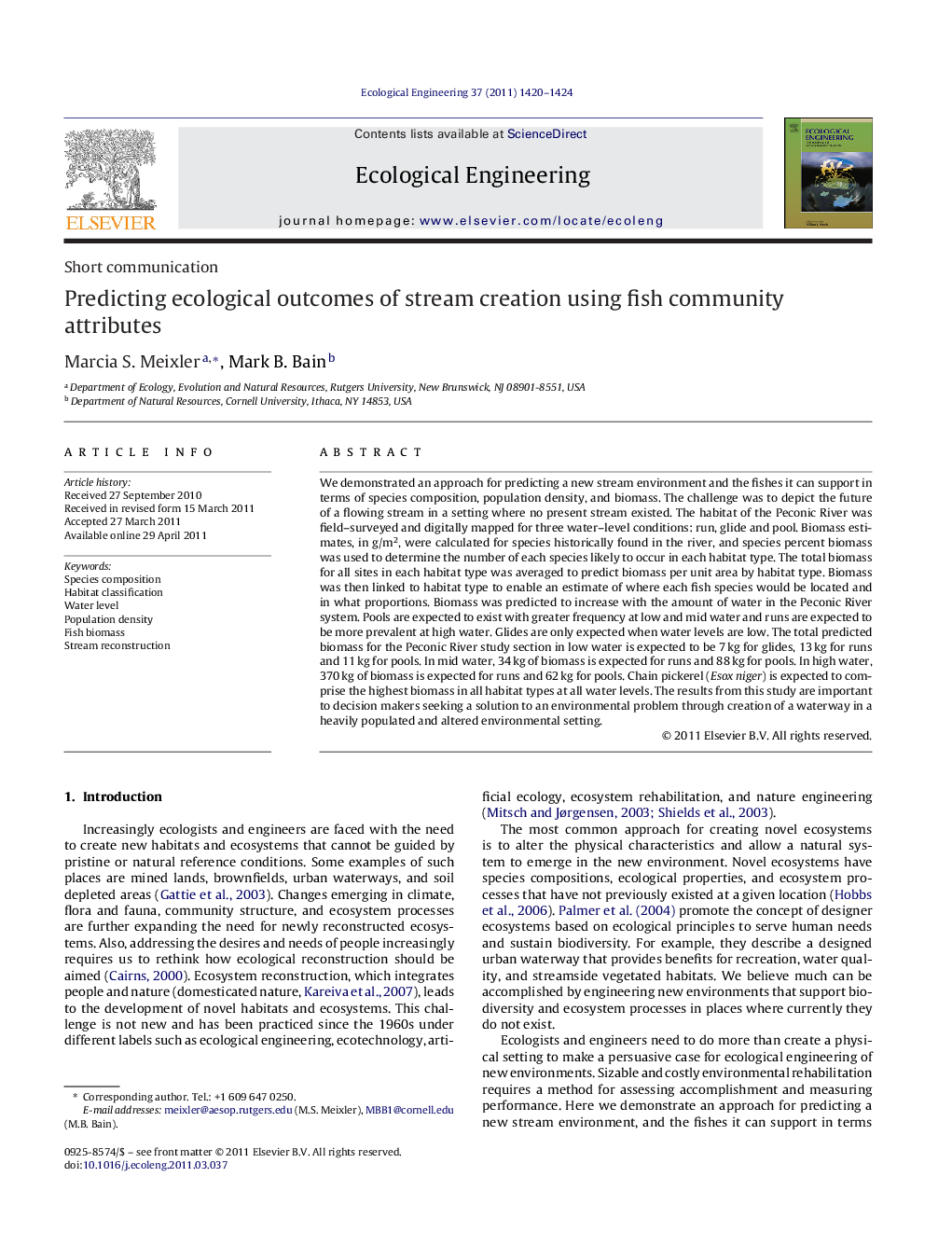| Article ID | Journal | Published Year | Pages | File Type |
|---|---|---|---|---|
| 4390256 | Ecological Engineering | 2011 | 5 Pages |
We demonstrated an approach for predicting a new stream environment and the fishes it can support in terms of species composition, population density, and biomass. The challenge was to depict the future of a flowing stream in a setting where no present stream existed. The habitat of the Peconic River was field–surveyed and digitally mapped for three water–level conditions: run, glide and pool. Biomass estimates, in g/m2, were calculated for species historically found in the river, and species percent biomass was used to determine the number of each species likely to occur in each habitat type. The total biomass for all sites in each habitat type was averaged to predict biomass per unit area by habitat type. Biomass was then linked to habitat type to enable an estimate of where each fish species would be located and in what proportions. Biomass was predicted to increase with the amount of water in the Peconic River system. Pools are expected to exist with greater frequency at low and mid water and runs are expected to be more prevalent at high water. Glides are only expected when water levels are low. The total predicted biomass for the Peconic River study section in low water is expected to be 7 kg for glides, 13 kg for runs and 11 kg for pools. In mid water, 34 kg of biomass is expected for runs and 88 kg for pools. In high water, 370 kg of biomass is expected for runs and 62 kg for pools. Chain pickerel (Esox niger) is expected to comprise the highest biomass in all habitat types at all water levels. The results from this study are important to decision makers seeking a solution to an environmental problem through creation of a waterway in a heavily populated and altered environmental setting.
